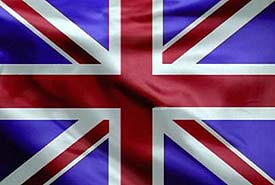Sport Invented in Great Britain
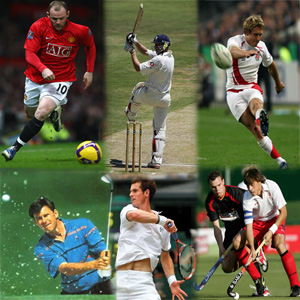
Contents Sport Invented in Great Britain Football 1863 Cricket 1787 Rugby 1871 Golf 1502 Basketball & Volleyball Hockey 1860 Rounders 1884 Badminton 1887 Lawn Tennis 1859 Table Tennis 1880 Snooker 1875 Bungee Jumping 1979 Bobsleigh 1890 Curling 1541 Darts
Football 1863
The origin of football (referred to as soccer by some) can be found in every corner of geography and history. The Chinese , Japanese, Italian, Ancient Greek, Persian, Viking, and many more all played a ball game that resembled football. The Chinese "football" games date as far back as 3000 years ago. The Ancient Greeks and the Roman used football games to prepare warriors for battle. In south and Central America a game called "Tlatchi" once flourished.

In Britain too, there are records of Football being played for hundreds of years.
But it was in England that the modern game of football really begin to take shape. In 1863 the first Football Association (F.A.) was founded in England.
In the 'Freemasons' Tavern' in Great Queen Street, London on 26 October 1863 rules for the modern game were laid down over a series of meetings.
Central to these meetings was 'Ebenezer Cobb Morley' (1831-1924) he wrote to Bell's Life newspaper proposing a governing body for the sport that led to the first meeting. He wanted a common set of rules so that clubs from all over the nation could compete with each other. Little did he know this would become the biggest sport in the world!
Main article
Cricket 1787
The origins of cricket are very vague, and many theories have been put forward suggesting its origins, but it is, without doubt, very English.
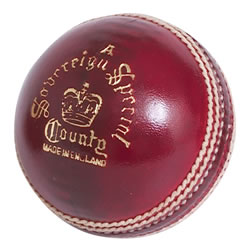
The first evidence of cricket being played was recorded in the year 1550, by the pupils of Royal Grammar School, Guildford.
The first recorded cricket match took place at Coxheath in Kent, England in 1646. This match also produced the first record of betting on cricket.
The world's first cricket club was formed in Hambledon in the 1760s and the world-famous Marylebone Cricket Club (MCC) was founded in 1787.
The beginnings of modern cricket is said to be to be 1787, when the Marylebone Cricket Club also known MCC was created. The MCC has since then gone on to become one of the most prominent bodies in world cricket
The first official International match was held between Canada and United States in the year 1844. Main article.
Rugby 1871
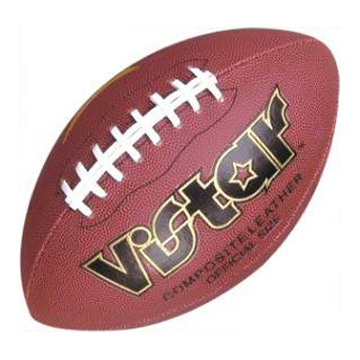
At the meeting for the Football Association several clubs were unhappy over the removal of two draft rules, firstly the rule which allowed for the running with the ball in hand ( Handball Ref! )
and secondly, obstructing such a run by hacking (kicking an opponent in the shins), tripping and holding (in other words fouling). Legend has it that one day in 1823, a senior school boy called William Webb Ellis elected to run with the ball rather than retiring to kick it as was the normal mode of play in Rugby School football matches.
Other clubs followed this lead and did not join the FA but instead in 1871 formed the Rugby Football Union.
Golf 1502
Golf was first played officially throughout Scotland from 1502, when the ban was lifted.
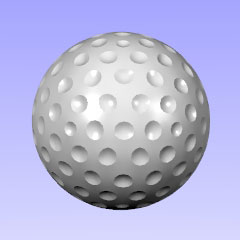
Most of the early references to golf in Scottish official records are either to ban it or to condemn those playing it. The first documented mention is in Edinburgh on 6th March 1457, when King James II banned ‘ye golf’, in an attempt to encourage archery practice, which was being neglected.
Golf in its early days in Scotland may well have had two distinct forms. One was a ‘short’ game similar to ‘kolf’ played in the Netherlands. From this developed ‘links golf’, played with a variety of clubs to holes, marked by flags, the fore runner of the game today.
Basketball & Volleyball
See YMCA
Hockey 1860
Hockey-like games involving sticks and balls have been played for thousands of years. Historical records show that a crude form of hockey was played in Egypt 4,000 years ago, and in Ethiopia around 1,000 BC.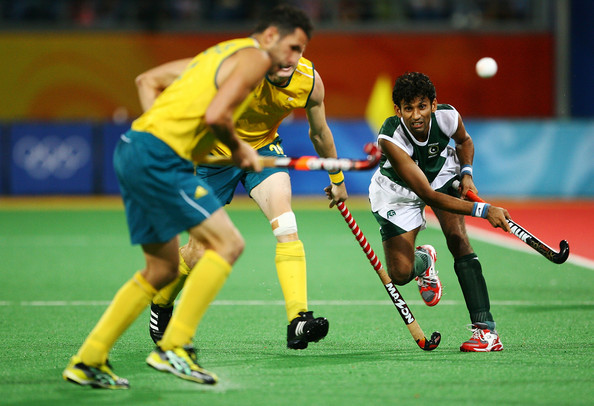
Hockey in England in the 17th and 18th century consisted of whole villages playing the game with the objective of hitting the ball into the opposing villages' common ground. Teams often consisted of 60 to 100 players and games occasionally lasted several days or so with injuries such as broken arms and legs not uncommon.
The game that we know today emerged at 'Eton College' in England in the 1860s when the first rules were written down. Further rules were written in 1875 when the first Hockey Association was formed. The game was played on a field nearly 200 metres in length and all players chased the ball for the whole of the game. London's 'Wimbledon Hockey Club' (organized 1883) standardized the game after the many centuries of informal play in England and it thereafter spread to other countries, particularly in Europe and the British empire.
At this time British soldiers were taking the game around the world and in Canada, where frozen fields were more common than grass, it made its way onto ice and so Bandy Ice evolved.
In 1886 the Teddington Cricket Club effectively lead a movement which resulted in the British Hockey Association being formed which included amongst its rules a striking circle for hitting goals.
Changes in rules and play quickly developed from this beginning and by 1889 the pyramid system - five forwards, three halves, two backs and a goalkeeper became the accepted method of playing hockey.
The United States also started playing field hockey in 1890, with the Field Hockey Association of America, which regulates men's play, being formed in 1930.
Hockey, or "Field Hockey" as it is also known, is now played in every continent with many nations competing in the three major competitions - The Olympic Games, The World Cup and The Champion's Trophy.
Rounders 1884

Rounders is predominantly an English game. The game has been played from the Tudor Times. The earliest nationally formalised rules of play were devised by the GAA in Ireland in 1884. In 1889, the Liverpool & Scottish Rounders Association was formed. It is typically a bat & ball team game. Rounders is still played in Ireland and England. 'Baseball' and 'Town-ball', are both bat and ball games, played by teams, that have originated from Rounders.
Badminton 1887
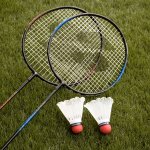
Badminton came from a child's game called battledore and shuttlecock, in which two players hit a feathered shuttlecock back and forth with tiny rackets. The game was called "POONA" in India during the 18th Century, and British Army Officers stationed there brought the game back to England in the 1860's. The army men introduced the game to friends, but the new sport was definitely launched there at a party given in 1873 by the Duke of Beaufort at his country place, "Badminton" in Gloucestershire. During that time, the game had no name, but it was referred to as "The Game of Badminton," and, thereupon, Badminton became its official name.
In 1887 the modern rules were laid down. The Bath Badminton Club was setup and standardized the rules, that still guide the sport today. In 1895, the Badminton Association (of England) was formed to take over the authority of the Bath Badminton Club, and the new group made rules, which now govern the game throughout the world.
Lawn Tennis 1859

The game was invented in 1859 by Major Thomas Harry Gem, a solicitor, and his friend Batista Pereira, a Spanish merchant, who both lived in Birmingham. They played it first on a lawn in the Edgbaston area, calling it ‘pelota’, after a Spanish ball game.
In 1872 both men moved to Leamington, and with two doctors from the Warneford Hospital, played pelota on the lawn behind the Manor House Hotel. The hotel bears a plaque erected during the centenary celebrations held on 11 June 1972, which reads: ‘In 1872 Major Harry Gem with his friend Mr. B. Pereira, joined with Dr. Frederick Haynes and Dr. A. Wellesley Tomkins to found the first lawn tennis club in the world and played the game on nearby lawns’. In 1874 they formed the Leamington Tennis Club, setting out the original rules of the game which form the basis of the modern ones. The Courier of 23 July 1884 recorded one of the first tennis tournaments, held in the grounds of Shrubland Hall.(demolished 1948)
One of the first real or royal tennis courts was built in Bedford Street to the North of the town in 1846 and survives to this day as a private club.
Table Tennis 1880
The earliest known form of the sport, called indoor tennis, was played in Victorian England among the upper-class as an after-dinner parlour game. In the early 1880s by British army officers in India and South Africa, using lids from cigar boxes as paddles and rounded corks from wine bottles as balls, with a row of books set up across the middle of a table to form the net.
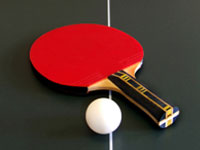
Other versions developed in England during the 1890s, known variously as "whiff whaff" and "gossima," and Parker Brothers began manufacturing an indoor tennis kit that included a portable net that could be set up on a table, a small ball covered with netting, and miniature paddles.
James Gibb, an Englishman who visited the United States in 1900, brought some hollow celluloid balls home and began playing indoor tennis with friends, using the new balls. Gibb apparently came up with the name "ping pong," representing the sounds of the ball hitting the paddle and then the table.
However, an English manufacturer of sporting goods, John Jacques, registered "Ping Pong" as a trade name in 1901 and sold American rights to Parker Brothers, who came out with a new kit under that name.
Another Englishman, E. C. Goode, in 1902 covered his wooden ping pong paddle with pebbled rubber, which allowed him to put spin on the ball. A Ping Pong Association was founded in England that year.
Snooker 1875
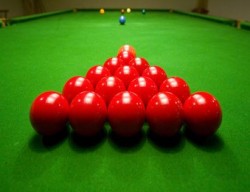
The game of snooker was invented by a Brit, 'Colonel Sir Neville Chamberlain' of the British Army garrisons of India. The game is believed to have came about as a mix of other billiard games, mainly English Billiards, this new billiard sport of snooker surfaced around 1875.
The term snooker was used as a derogatory term for the first year recruits of the Royal Military Academy of Woolwich in England. For many years the game was known as 'Snookers Pool' and was played with a smaller number of balls and to very different scoring rules than the game we know today.
It wasn't until the Early 1900's that the game evolved to the game it is now. Played by the army officers and aristocracy stationed in India the game grew in complexity and in its parts. The game of snooker has pretty much stayed the same since
Bungee Jumping 1979

Chris Baker of Bristol, England used an elastic rope to emulate and improve on a kind of urban vine jumping. The first modern bungee jump was made on '1 April 1979' from the 250ft Clifton Suspension Bridge in 'Bristol', and was made by four members of the Dangerous Sports Club.
The jumpers, led by David Kirke, were arrested shortly after, but continued with jumps in the US from the Golden Gate and Royal Gorge bridges.
Bobsleigh 1890
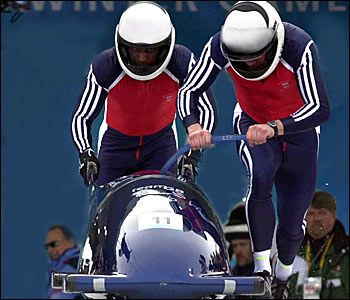
Bobsleigh, was surprisingly invented by the English. A group of holidaymakers in Switzerland in 1890, wanted to create a sled that could carry people down the snow-covered road between St Moritz and Celerina. They joined two sleds together. Sport's name comes from the way teams bobbed their heads to try and gain more speed.
The new sport immediately caught on and a special track, complete with banked curves, made of ice, was constructed next to the road in 1902.
The sport started as a leisure activity for the rich young daredevils of Europe who gathered for fun on the alpine slopes. It was added to the Winter Olympics as a four-man event at the Winter Olympics in Chamonix 1924 and two-man later at Lake Placid in 1932.
Curling 1541

The game of curling was invented in late medieval Scotland, as evidenced by a curling stone inscribed with the date 1511, uncovered along with another bearing the date 1551, when an old pond was drained at Dunblane, Scotland. The first written reference to a contest using stones on ice coming from the records of Paisley Abbey, Renfrew, in February 1541.
One of the national games of Scotland, it has spread to many countries.
Darts
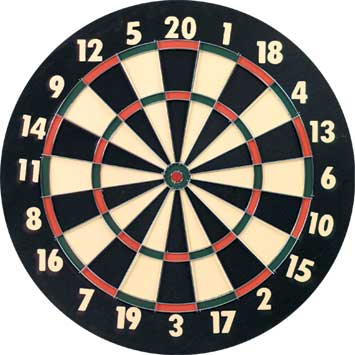
Darts began in Medieval England and is probably a spin off of archery. Played started on ships where room was restricted, by shortening arrows and throwing them at the bottom of an empty wine barrel. Henry VIII enjoyed the game immensely. So much so, that he was given a beautifully ornate set by Anne Boleyn. The game remained popular throughout the British Empire but it wasn't until somewhere around 1900 that the rules and darts began to look like the game we play today.
